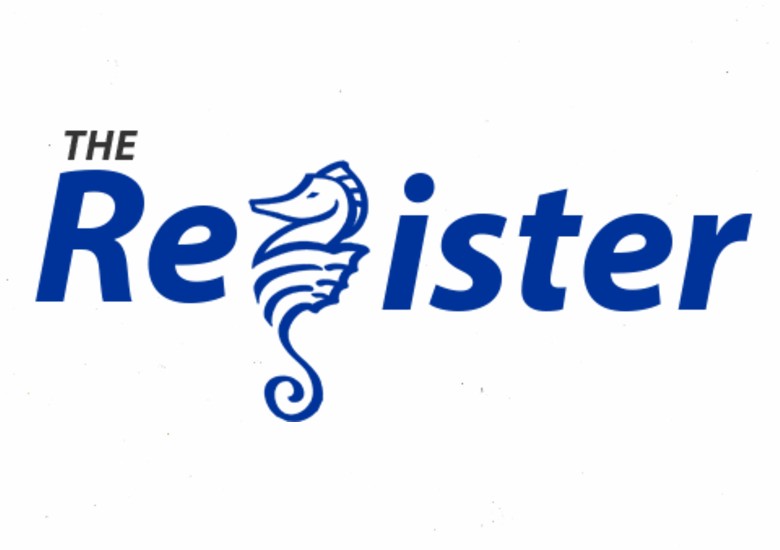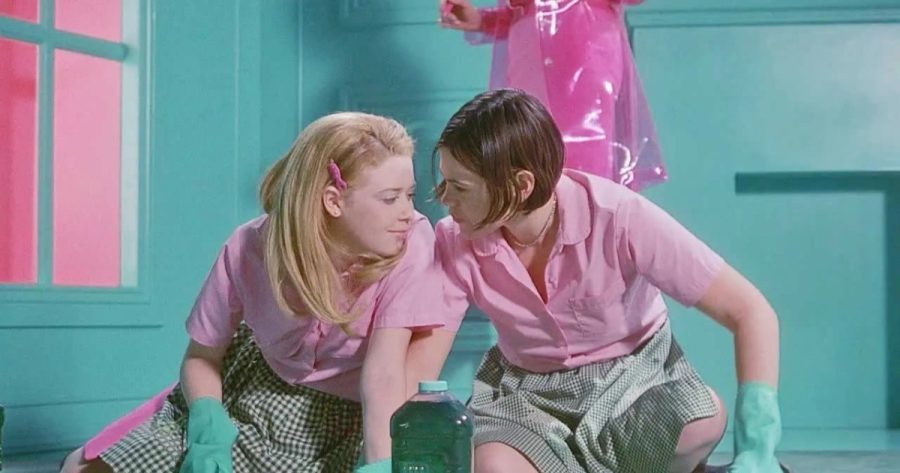“But I’m a Cheerleader”: a campy and subversive love story
October 5, 2022
Warning: This review does contain minor spoilers! Read at your own risk…
In the 1999 film “But I’m a Cheerleader”, director Jamie Babbit takes gender roles to the extreme in order to subvert them. The movie follows Meghan (Natasha Lyonne), a traditional girly girl, who gets sent to a conversion therapy center when her friends and family suspect her of being a lesbian. Meghan herself seems to believe she’s straight by default due to her feminine presentation and conservative upbringing, despite all the reasons her loved ones send her away (vegetarianism, Melissa Etheridge posters, not enjoying kissing her boyfriend).
The conversion camp she arrives at, True Directions, is an absurdly colorful embodiment of the camp aesthetic. Throughout history, camp has gone hand in hand with queerness, specifically gay or effeminate men, and is defined as “ostentatious, exaggerated, and theatrical” by the Oxford Dictionary. This definition perfectly fits with the conversion center she is sent to: a bright colorful building that appears almost like a theater set, with a hot pink room and uniforms for the girls and all blue for the boys. The house’s design leans heavily on artifice, with plastic furniture, fake flowers in the garden, and Barbie-esque decoration. All of this campy plastic is a metatextual genius move on Babbit’s part as it truly emphasizes the fakeness of the gender roles the program is pushing.
Once arrived, Meghan joins the gaggle of misfit gays already attending, including resident bad girl Graham (Clea DuVall). Showrunner Mary (Cathy Moriarty) starts to teach the girls femininity and heterosexuality, giving lessons in gendered tasks like cleaning, motherhood, and makeup. Throughout all this, Meghan is assigned to Graham as a mandatory “friend”. They have wedding dress fittings and quiz each other on traditional gender roles, all in preparation for the “normal” straight life they will lead after graduation.
Despite camp being an aesthetic tied to queerness, in the film it is heternormativity that is exaggerated and artificial, and homosexuality that is the authentic truth. The film demonstrates this with a scene in which the (soon to be ex) gays sneak out of the camp and into a gay bar, aided by two “ex-ex-gays” who used to attend True Directions but ran away. In this part of the film, you finally see the teens out of their gendered uniforms and dressing themselves. It’s shocking to see the darker muted colors and the androgynous silhouettes the characters choose in contrast to the vibrant pinks and blues forced on them throughout the film. Similarly, the gay club itself is an incredible juxtaposition to the technicolor True Directions, with a smoky purple interior that represents gender fluidity and the blending of femininity and masculinity.
Later that night, Meghan and Graham confess their love for one another, a beacon of hope and authenticity in the Barbie dreamhouse life they’re pretending to live in. Over the following weeks, they fall for each other more and more in secret, all stolen glances and quick pecks when no one is watching. Inevitably they get caught, and Meghan gets kicked out. In an act of self-preservation, Graham takes a plea deal and stays. Meghan, hurt and betrayed, begins to formulate a plan to rescue her love.
On graduation day, all of the plasticky artifice of the camp reaches a new peak. The graduates don latex formalwear, pink dresses and blue suits. With fresh 1950s haircuts and pearls so big Audrey Hepburn would be proud, they walk down the aisle and receive an award with figurines representing a heterosexual couple. Everything about this ceremony is so showy that it subverts the typical roles of gay and straight and equates heterosexuality to a performance not unlike drag.
At the last second, Meghan swoops in and saves Graham in front of the entire audience of parents. They drive off into the sunset, and the setting behind them is something we’ve seldom seen yet, actual nature. Green trees and flowers that aren’t plastic. A blue sky that isn’t a painted backdrop. They aren’t under watchful eyes, only the sun itself, and as they kiss, the audience can feel how bright their future is together.
It’s hilarious, but equally heartwarming, with its optimistic ending that is so rare in lesbian movies. It’s definitely a feel-good movie that seems silly and fluffy, but when you dig deeper, it’s a deep social commentary on how ingrained gender roles are in Western society. If you want to laugh, cry and experience a ridiculous work of art, “But I’m a Cheerleader” is available on Amazon Prime, Apple TV and YouTube.























![Check out Rose Howell's article "Teaching Conflict": https://bhsregister.com/9661/news/teaching-conflict/
“I know that some people have colleagues who disagree with me because they don’t think these conversations should happen in school, [but] where else should they happen then?” ~Social Studies teacher Francesca Dupuis](https://scontent-ord5-1.cdninstagram.com/v/t51.29350-15/404979361_1569222083889381_8162261023681050366_n.jpg?_nc_cat=101&ccb=1-7&_nc_sid=18de74&_nc_ohc=RHOhiTkucIgAX9i9OIz&_nc_ht=scontent-ord5-1.cdninstagram.com&edm=ANo9K5cEAAAA&oh=00_AfDvefW7hOPJEWQXiafhqZSFlGqW7IQC9rpAVV3pFKgt8w&oe=65B50250)
